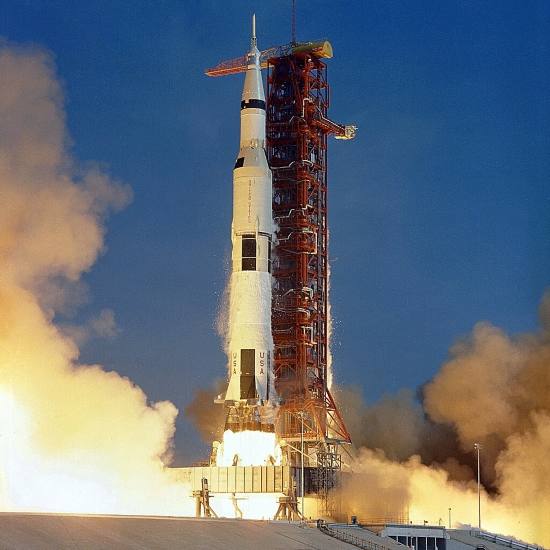
This simulation models the Saturn V rocket and its three-stage ascent, based on NASA Apollo mission data. Users can track velocity, altitude, pitch angle, and other telemetry in real time while observing stage separations of the Saturn V 5 rocket.
The model demonstrates how the Saturn V lunar rocket and its stages—S-IC, S-II, and S-IVB—work together to reach Earth orbit and perform translunar injection. The simulation simplifies the third stage as a single continuous burn rather than splitting it, yet the final velocity closely approximates that required for a Moon-bound trajectory.
This simulation is intended for educational purposes and as a tool for exploring the dynamics of Saturn V rocket models and rocket launch simulation concepts.
Experience the Apollo moon mission launch with physics-based simulation
This simulation models the launch of the Saturn V rocket, the vehicle used during NASA's Apollo missions to the Moon. It visualizes the rocket's ascent, stage separation, and trajectory using simplified physics. The simulation tracks key parameters such as:
Graphical elements include a dynamic canvas showing the rocket, Earth curvature, clouds, and stars, along with real-time charts for velocity, altitude, and pitch angle. Controls allow users to start, pause, reset, and adjust simulation speed.
This simulation provides a visually engaging, physics-informed approximation of the Saturn V launch, suitable for educational and demonstration purposes. While it captures the general behavior of multi-stage ascent and gravity turn maneuvers, it does not replace detailed orbital mechanics or NASA mission planning software.